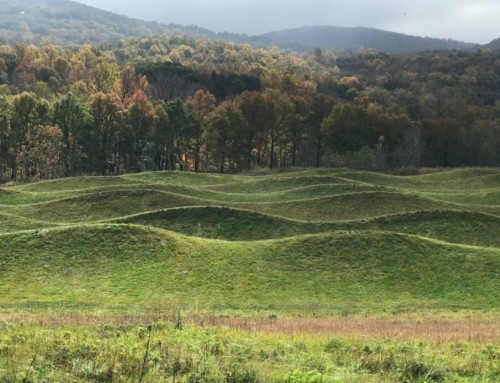I’ve written plenty lately about the seeds I’m trying to keep out of my garden.
But there are so many attractive seedheads worth keeping in it – to savor as plants die, encourage to self-sow (if they’re polite about it), shelter beneficial insects, feed winter birds.
Last fall I was invited to speak at The Olbrich Botanical Gardens in Madison, Wisconsin. (Photo above).
I’m not one to squander an opportunity to explore a new place by flying out at a civilized hour and missing the day there. And I’m not about to chance flying the same day as my talk or worry about catching a flight afterward.
If I’m going all that way, I want to be there long enough to get acquainted.
So, arriving in Wisconsin bleary-eyed at breakfast time and getting home well after midnight, lugging photo gear all the way, gave me three days to wander and photograph.
Wisconsin Prairies and Gardens in Fall
My host took me to the world’s first ecological prairie restoration/research project (started 1936), The Curtis Prairie and to the stone council ring at seminal Prairie Style landscape architect Jens Jensen’s last park commission. I spent most of two days blissfully wandering through amazingly inventive garden rooms at the Olbrich.
And I visited Roy Diblik’s legendary Northwind Perennial Farm (where the tall native switchgrass cultivar, Panicum virgatum ‘Northwind’ originated).
His book The Know Maintenance Perennial Garden is about gardening, “in harmony with how plants grow and interact with each other in nature.”
Roy encourages gardeners to think in terms of self-sustaining plant communities interwoven in time and space. Instead, we too often see physically separated plants surrounded by wood chip mulch.
He writes, “I believe perennials provide a solid beginning, middle, and end for durable, diverse, beautiful gardens.”
The prairies, planted meadows and more formal gardens I visited were durable, diverse and beautiful indeed. At the end of the growing season, they were packed with plants that die beautifully, holding the promise of new life in their seeds.
Swirly grass-like sedges and buff-toned grasses wove through still-green perennials, delicate dancing seedheads, chunky pods, fluffy white clumps about to go airborne and dark dried bloom stalks.
Why on earth would you want to cut these plants down before their time?
Native perennials to leave standing
- Prairie dropseed (Sporobolus heterolepis)
- Little bluestem grass (Schizachyrium scoparium)
- Turtlehead (Chelone lyonii ‘Hot Lips’)
- Alumroot (Heuchera villosa ‘Autumn Bride’)
- Joe-Pye weed (Eutrochium )
- Beardtongue (Penstemon digitalis)
- Rattlesnake master (Eryngium yuccifolium)
- Anise hyssop (Agastache foeniculum)
- Blazing star (Liatris )
- Black-eyed, brown-eyed Susans (Rudbeckia spp)
- Purple coneflowers (Echinacea purpurea)
Non-native perennials that stand up in fall
- Sedums (‘Autumn Joy’ and similar cvs.)
- Allium ‘Milennium’
- Blackberry lily (Belemcanda chinensis)
- Astilbe
- Nepitella (Calamintha nepeta Nepeta)

Red amaranth seedheads and dried artichokes





